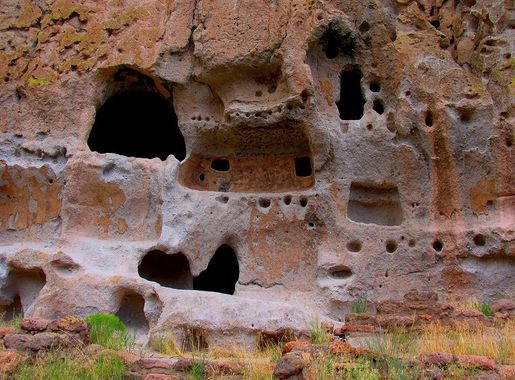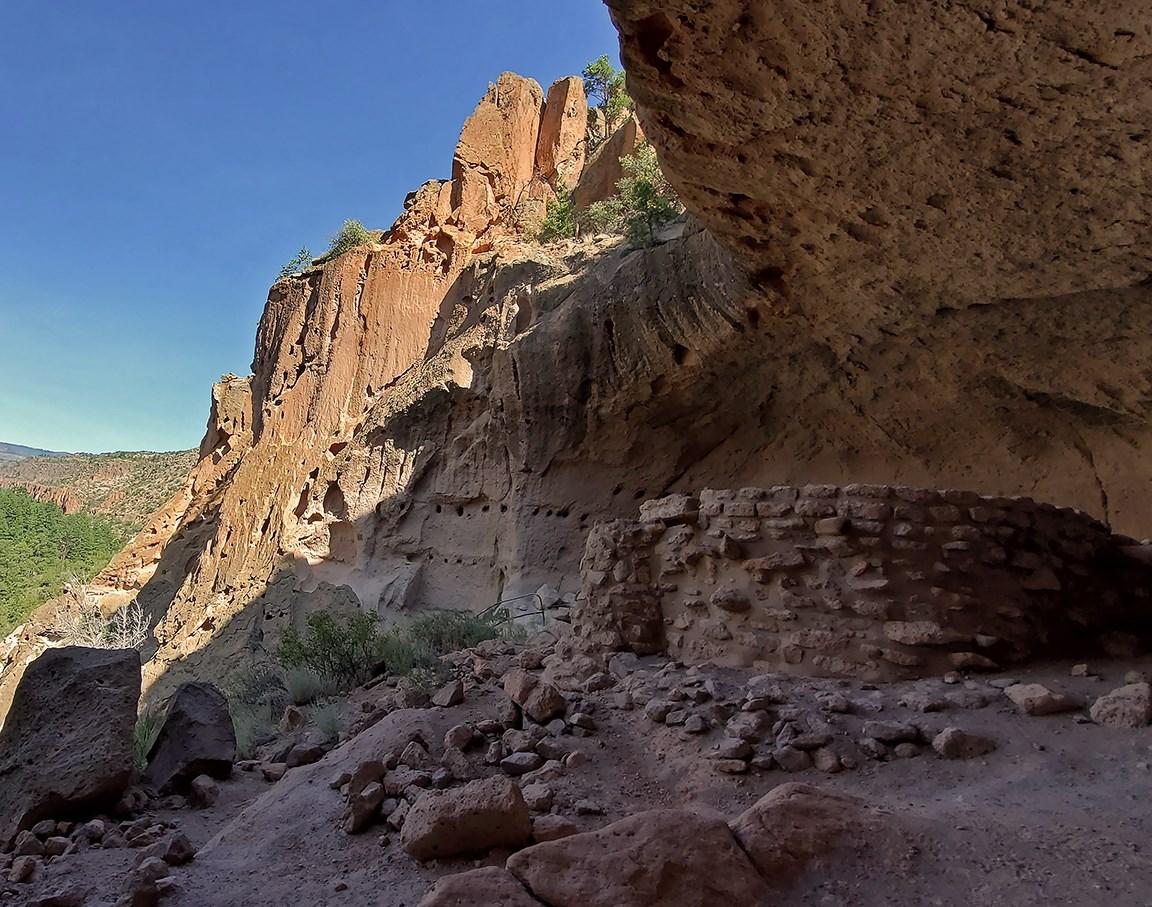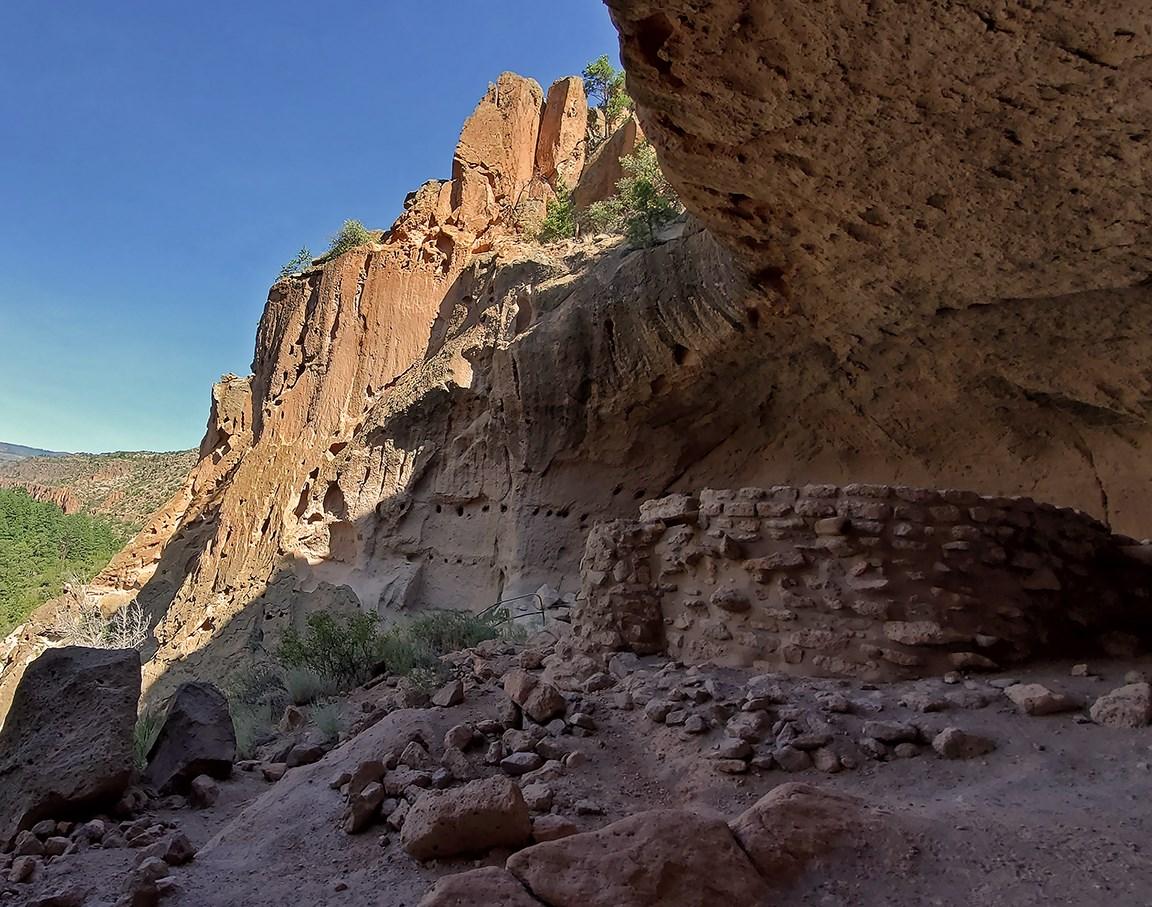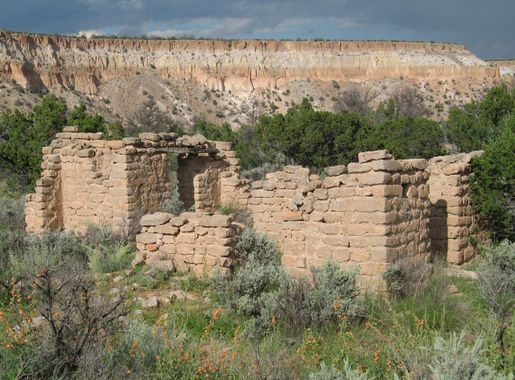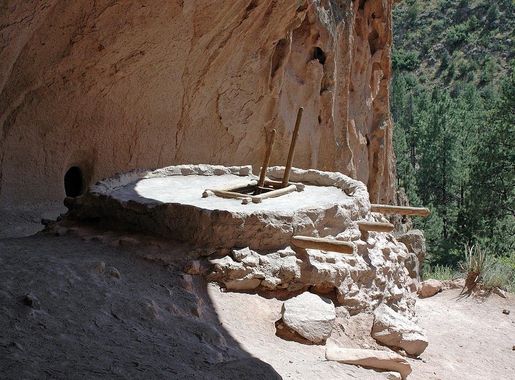
Exploring the Ancient Wonders of Bandelier National Monument
Discover the ancient dwellings and stunning landscapes of Bandelier National Monument, a hidden gem in New Mexico that offers a unique blend of history and natural beauty.
Bandelier National Monument, located in New Mexico, is a treasure trove of ancient history and natural beauty. This stunning destination is known for its well-preserved archaeological sites that date back over 11,000 years. As you explore the park, you'll find evidence of the Ancestral Pueblo people, including cliff dwellings, petroglyphs, and masonry walls. The landscape is a breathtaking mix of rugged canyons and mesas, offering visitors a diverse and picturesque experience. The park spans over 33,000 acres and offers a variety of outdoor activities for all ages. Hiking trails range from easy walks to challenging treks, with the Main Loop Trail being a popular choice. This trail takes you past key archaeological sites, including the Big Kiva and Tyuonyi ruins, where you can get a glimpse into the daily lives of the ancient inhabitants. For those seeking more adventure, the Alcove House trail requires climbing ladders to reach a high cliff dwelling with stunning views of the canyon below. Wildlife enthusiasts will appreciate the diverse flora and fauna that call Bandelier home. Keep an eye out for mule deer, Abert's squirrels, and a wide variety of bird species. The park is also a haven for photographers, with its dramatic landscapes and changing light conditions providing endless opportunities for stunning shots. Whether you're a history buff, nature lover, or simply looking for a unique destination, Bandelier National Monument offers a rich and rewarding experience.
Local tips in Bandelier National Monument
- Arrive early to avoid crowds, especially during peak tourist season.
- Wear sturdy shoes suitable for hiking and exploring uneven terrain.
- Bring plenty of water and sunscreen, as the New Mexico sun can be intense.
- Check the weather forecast and be prepared for sudden changes in conditions.
- Visit the Visitor Center first for maps, information, and to watch an introductory film about the park.
- Don't miss the chance to climb the ladders to Alcove House for an unforgettable experience.
- Respect the archaeological sites and follow guidelines to help preserve the park's history.
Exploring the Ancient Wonders of Bandelier National Monument
Bandelier National Monument, located in New Mexico, is a treasure trove of ancient history and natural beauty. This stunning destination is known for its well-preserved archaeological sites that date back over 11,000 years. As you explore the park, you'll find evidence of the Ancestral Pueblo people, including cliff dwellings, petroglyphs, and masonry walls. The landscape is a breathtaking mix of rugged canyons and mesas, offering visitors a diverse and picturesque experience. The park spans over 33,000 acres and offers a variety of outdoor activities for all ages. Hiking trails range from easy walks to challenging treks, with the Main Loop Trail being a popular choice. This trail takes you past key archaeological sites, including the Big Kiva and Tyuonyi ruins, where you can get a glimpse into the daily lives of the ancient inhabitants. For those seeking more adventure, the Alcove House trail requires climbing ladders to reach a high cliff dwelling with stunning views of the canyon below. Wildlife enthusiasts will appreciate the diverse flora and fauna that call Bandelier home. Keep an eye out for mule deer, Abert's squirrels, and a wide variety of bird species. The park is also a haven for photographers, with its dramatic landscapes and changing light conditions providing endless opportunities for stunning shots. Whether you're a history buff, nature lover, or simply looking for a unique destination, Bandelier National Monument offers a rich and rewarding experience.
When is the best time to go to Bandelier National Monument?
Unmissable attractions to see
Meow Wolf Santa Fe's House of Eternal Return
Discover the enchanting world of Meow Wolf in Santa Fe, where art, imagination, and interactivity collide for an unforgettable experience.
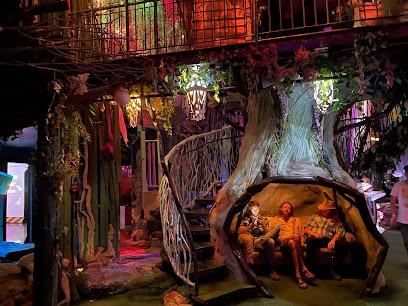
Santuario de Chimayo
Discover the Santuario de Chimayo, a historic shrine in New Mexico famous for its healing soil, stunning architecture, and deep spiritual significance.
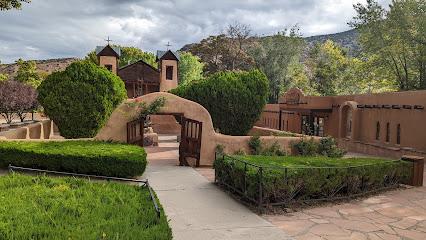
Kasha-Katuwe Tent Rocks National Monument
Explore the mesmerizing cone-shaped formations and stunning landscapes at Kasha-Katuwe Tent Rocks National Monument, a hidden gem in New Mexico.
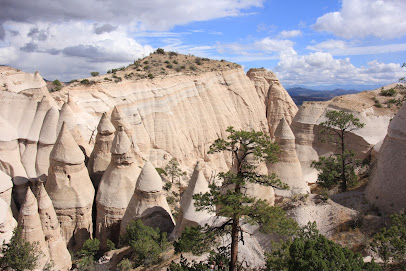
Pecos National Historical Park
Explore the ancient ruins and picturesque trails of Pecos National Historical Park, a blend of history and nature in the heart of New Mexico.
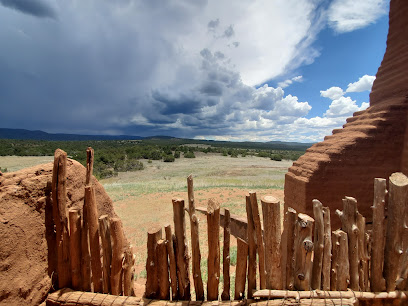
Gila Cliff Dwellings National Monument
Discover the ancient cliff dwellings and breathtaking landscapes of Gila Cliff Dwellings National Monument, a gem of New Mexico's rich heritage.
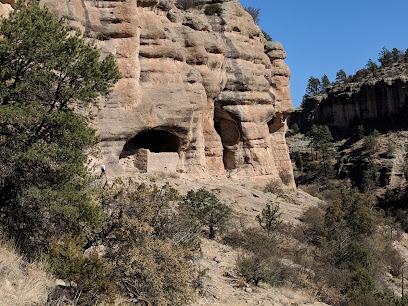
Ashley Pond
Explore Ashley Pond in Los Alamos, NM: a serene park with rich history, scenic views, and perfect picnic spots amidst nature's beauty.
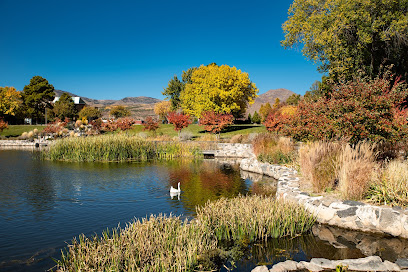
Jemez Soda Dam
Experience the vibrant beauty of Jemez Soda Dam, a stunning natural attraction in New Mexico's Jemez Springs, perfect for nature lovers and adventurers alike.
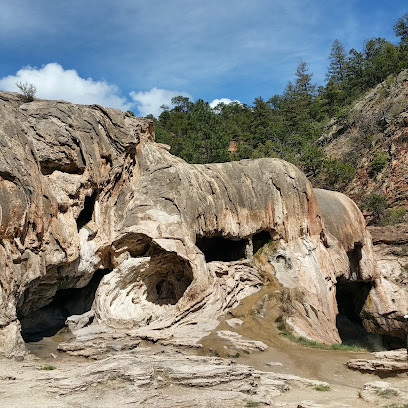
Coronado Historic Site
Discover the rich history and serene beauty of Coronado Historic Site, where ancient Puebloan culture meets the stunning New Mexican landscape.
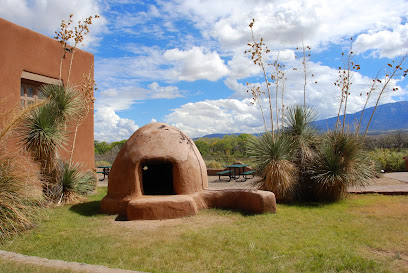
Manhattan Project National Historical Park
Uncover the history of the Manhattan Project at this unique National Historical Park in Los Alamos, New Mexico, where science met wartime urgency.
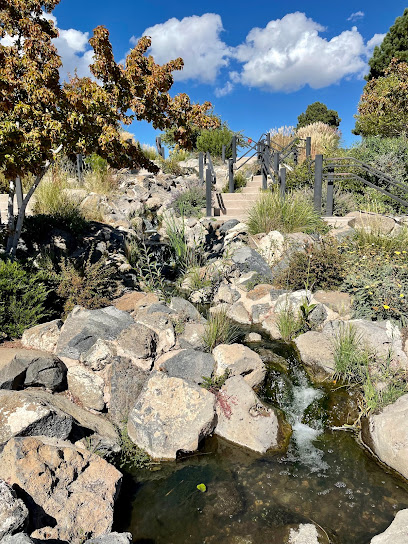
The O'Keeffe: Welcome Center
Discover the artistic legacy of Georgia O'Keeffe at The O'Keeffe: Welcome Center in Abiquiu, New Mexico, where art meets the stunning Southwestern landscape.
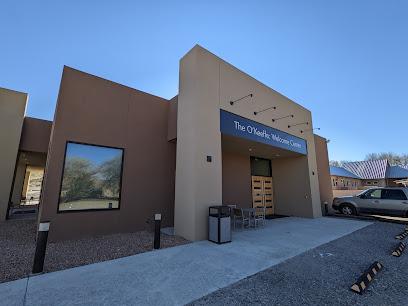
Urban Park
Discover Urban Park in Los Alamos, NM: A picturesque park perfect for relaxation, family fun, and outdoor activities amidst stunning natural beauty.
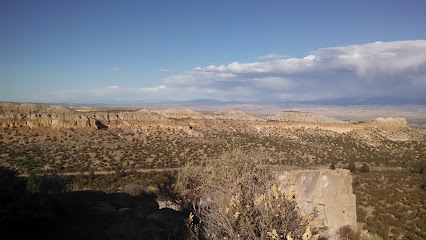
Manhattan Project National Historical Park (Los Alamos Site) - Visitor Contact Station
Discover the profound history of the Manhattan Project at the Los Alamos Visitor Center, where science, ethics, and history converge.
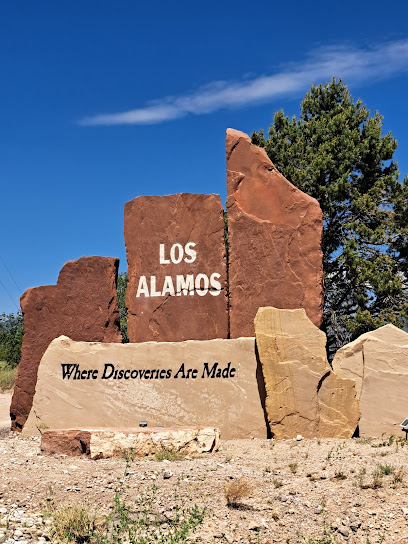
Poeh Cultural Center & Museum
Explore the vibrant heritage of the Pueblo people at the Poeh Cultural Center & Museum in Santa Fe, New Mexico, a must-visit for culture enthusiasts.
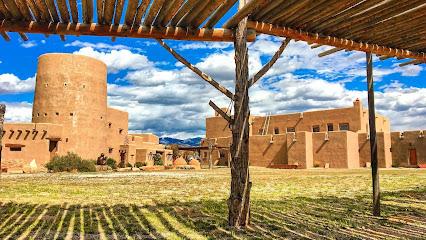
Fuller Lodge Art Center
Discover the vibrant arts scene at Fuller Lodge Art Center in Los Alamos, NM, where local creativity meets history in a stunning setting.
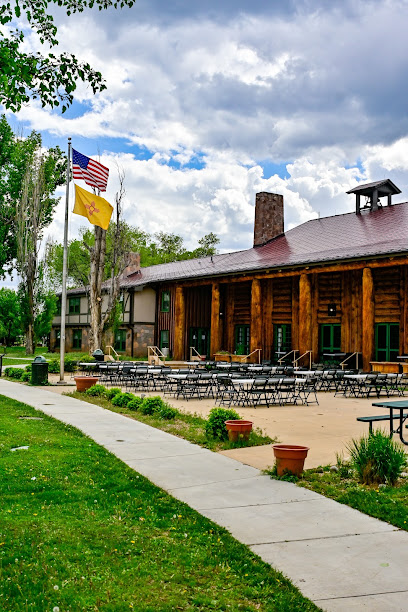
Plaza Blanca
Explore Plaza Blanca: A breathtaking hiking area in Abiquiu, NM, featuring stunning rock formations and serene landscapes perfect for outdoor adventures.
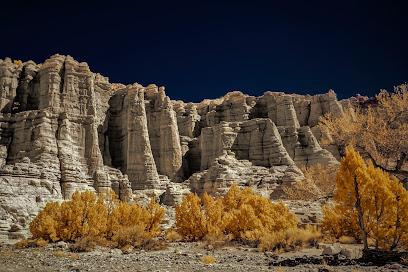
Essential places to dine
Bandelier National Monument
Discover Bandelier National Monument: A breathtaking blend of ancient history and stunning natural beauty in New Mexico.
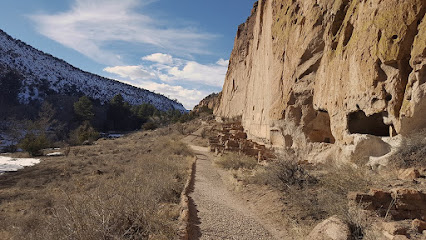
Subway
Enjoy fresh sandwiches at Subway in Los Alamos - the perfect spot for a quick meal during your travels.
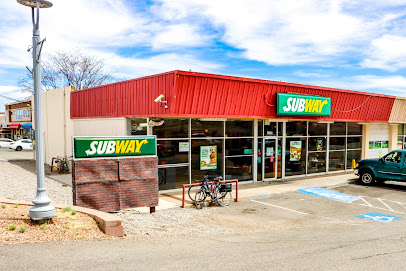
Sirphey in the Canyon
Experience local flavors and stunning views at Sirphey in the Canyon – your perfect dining spot near Bandelier National Park.
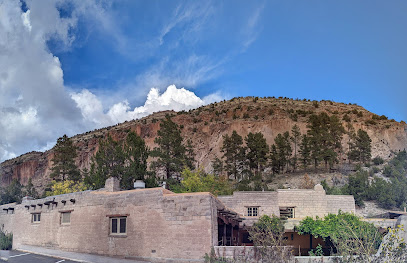
Markets, malls and hidden boutiques
Bandelier National Monument
Explore Bandelier National Monument: A unique blend of ancient history, stunning landscapes, and diverse wildlife in New Mexico's captivating national reserve.
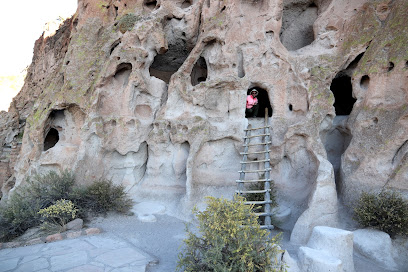
Bandelier National Monument Visitor Center
Uncover the ancient Puebloan culture and stunning landscapes at Bandelier National Monument Visitor Center, your gateway to adventure in New Mexico.

Smith's Marketplace
Explore the vibrant offerings at Smith's Marketplace in Los Alamos, where fresh produce, gourmet delights, and local specialties await every shopper.
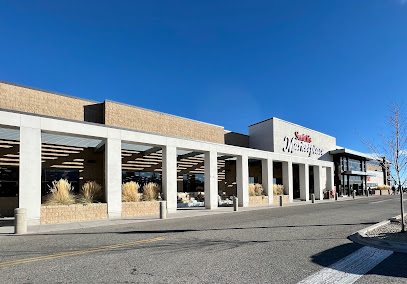
Puye Cliff Dwellings
Discover the breathtaking Puye Cliff Dwellings, a historical and cultural gem in New Mexico, where nature and ancient history intertwine.
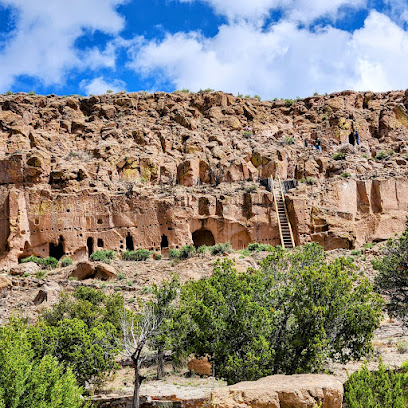
Casa Grande Trading Post
Explore unique gifts, local history, and geological wonders at Casa Grande Trading Post in Los Cerrillos, New Mexico.
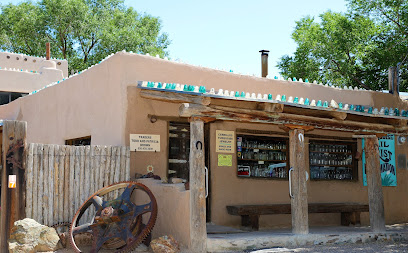
Camino Real Imports Santa Fe
Experience the charm of Santa Fe at Camino Real Imports, your go-to destination for unique furniture, gifts, and local pottery.
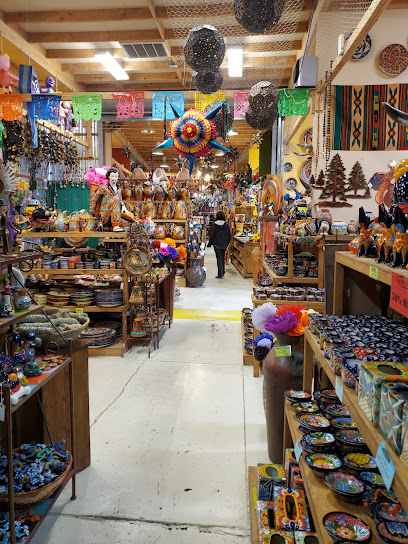
Stephen's A Consignment Gallery
Explore Stephen's A Consignment Gallery in Santa Fe for a unique selection of antiques, art, and collectibles that blend history with modern charm.

KESHi the zuni connection
Discover the beauty of Native American art at KESHi the Zuni Connection, where handcrafted jewelry and unique gifts come together in Santa Fe.
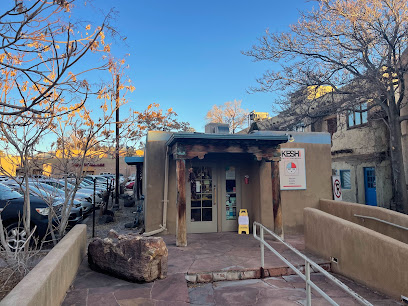
The Oldest House Indian Shop
Explore the heritage of Native American culture at The Oldest House Indian Shop, a historical landmark in Santa Fe, New Mexico, offering authentic crafts.

The Chile Shop
Explore the rich culinary heritage of New Mexico at The Chile Shop in Santa Fe, featuring gourmet groceries and unique local gifts.
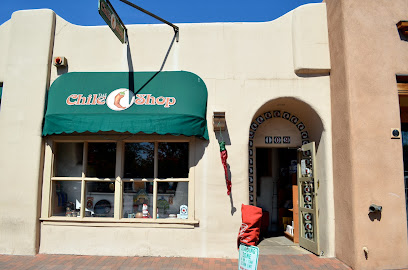
Original Trading Post
Explore the Original Trading Post in Santa Fe for authentic Native American arts, crafts, and a deep connection to indigenous culture.
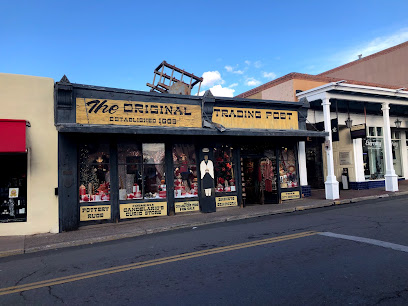
Los Alamos Cooperative Market
Explore the flavors of Los Alamos at the Cooperative Market, your go-to destination for fresh produce, local meats, and delicious café offerings.
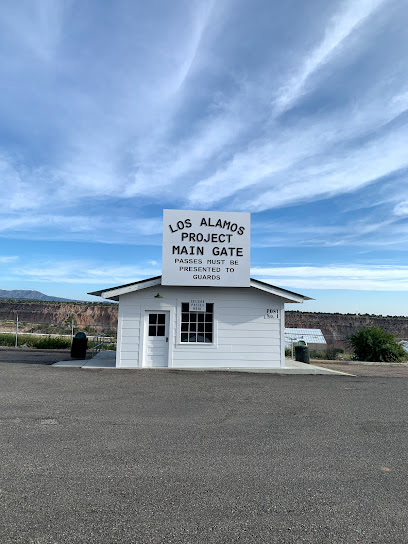
Alcove House
Discover the ancient cliff dwellings and breathtaking views at Alcove House in Bandelier National Monument, a must-visit historical landmark in New Mexico.
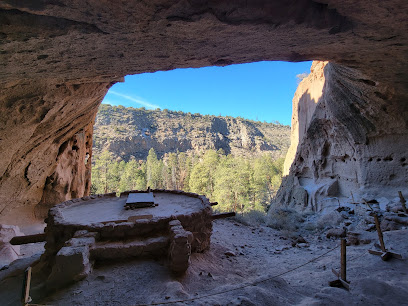
El Nicho
Discover unique handmade treasures at El Nicho, your go-to gift shop in the heart of Santa Fe, showcasing local artisans and vibrant culture.
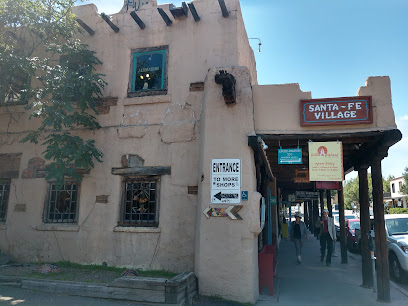
Natures Emporium Cherokee Soap Co.
Explore the rich artistry of Native American culture at Natures Emporium Cherokee Soap Co. in Santa Fe, NM, featuring unique handcrafted goods and local art.
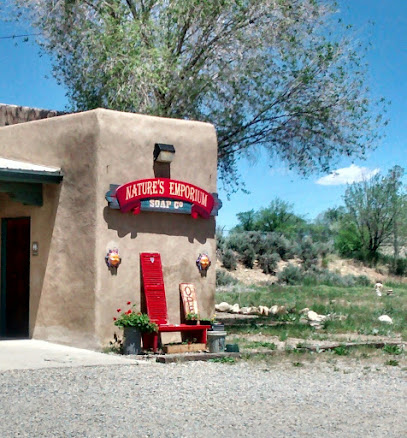
Essential bars & hidden hideouts
Pajarito Brewpub and Grill
Discover the flavors of New Mexico at Pajarito Brewpub and Grill, where craft beer meets delicious cuisine in a welcoming atmosphere.
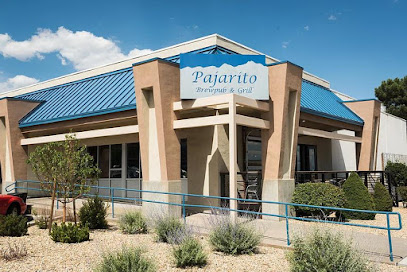
Pig and Fig Cafe
Discover the heart of White Rock at Pig and Fig Cafe, where gourmet breakfast, fresh pastries, and fine wines await every traveler.
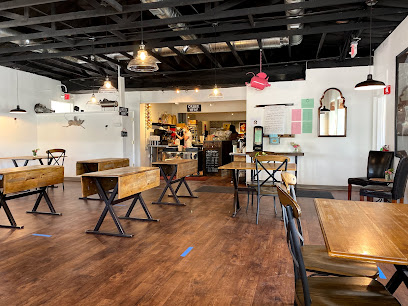
El Parasol
Experience the vibrant flavors of Mexico at El Parasol, Los Alamos' beloved destination for authentic and delicious Mexican cuisine.

Blue Window Bistro
Discover the flavors of New Mexico at Blue Window Bistro, a charming restaurant in Los Alamos offering fresh, local cuisine for every taste.
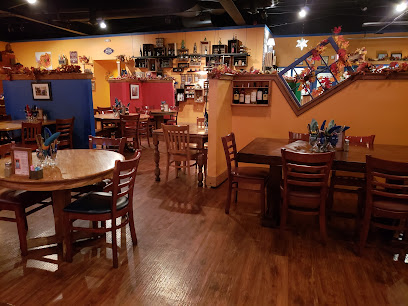
El Rigobertos Taco Shop
Experience the vibrant flavors of authentic Mexican cuisine at El Rigobertos Taco Shop in Los Alamos, a culinary gem for all taco lovers.
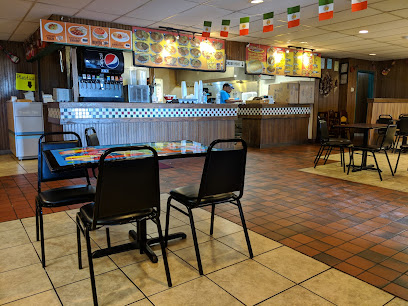
Sonic Drive-In
Discover the nostalgic charm and delicious fast food of Sonic Drive-In in Los Alamos, NM, where classic American flavors meet fun dining.

Viola's
Experience the vibrant flavors of authentic Mexican cuisine at Viola's, a beloved breakfast and lunch spot in Los Alamos, New Mexico.
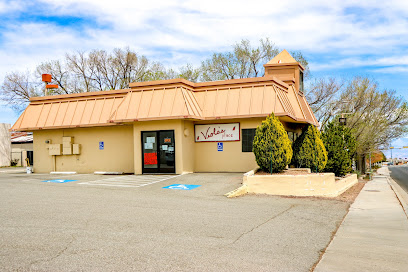
Pyramid cafe
Discover the flavors of the Mediterranean at Pyramid Cafe, a cozy dining spot in Los Alamos, NM, offering delicious dishes and a welcoming atmosphere.
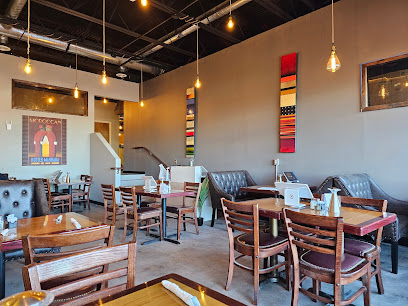
Yuan’s Dumpling and Noodle House
Discover the rich flavors of Asia at Yuan’s Dumpling and Noodle House, where authentic Chinese cuisine meets a warm, inviting atmosphere.
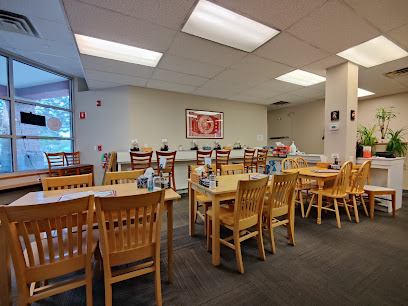
Cottonwood on the Greens
Discover Cottonwood on the Greens, a charming American restaurant in Los Alamos, offering delicious meals and stunning views in a family-friendly atmosphere.
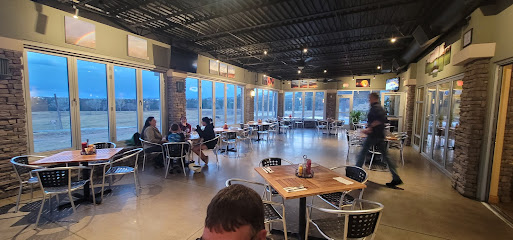
No Scum Allowed Saloon
Discover the Wild West spirit at No Scum Allowed Saloon in White Oaks, NM, featuring a vibrant atmosphere and a fantastic beer selection.
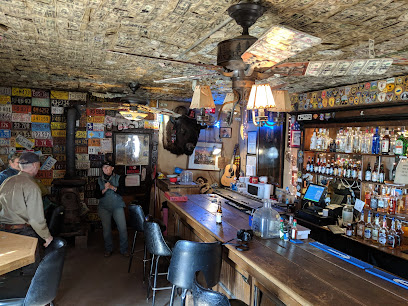
Origami
Savor the taste of Japan at Origami, a delightful sushi and Asian restaurant in the heart of Los Alamos, New Mexico.
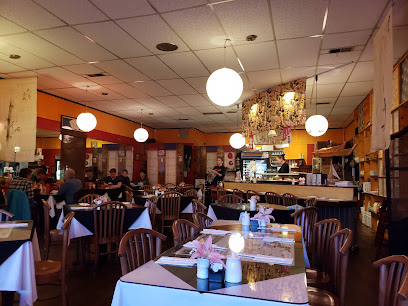
Boese Bros Brewpub - Los Alamos
Discover the unique flavors of Los Alamos at Boese Bros Brewpub, where craft beer meets delicious cuisine in a cozy setting.

Muy Salsas
Experience the vibrant flavors of Mexico at Muy Salsas in Los Alamos, NM, where every dish tells a story of tradition and taste.
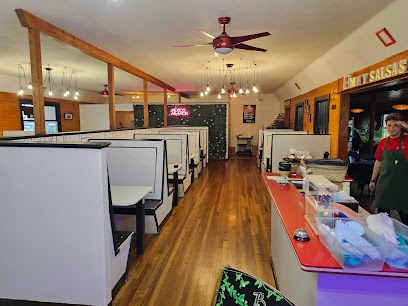
Chili Works
Experience authentic Mexican fast food at Chili Works in Los Alamos, NM, where flavor meets convenience in a vibrant setting.
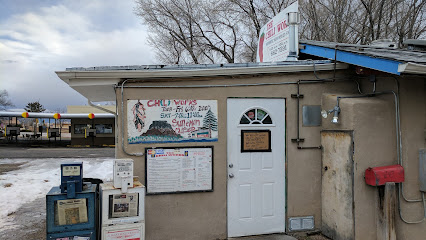
Local Phrases about Bandelier National Monument
-
- HelloHola
[oh-lah] - GoodbyeAdios
[ah-dee-ohs] - YesSí
[see] - NoNo
[noh] - Please/You're welcomePor favor/De nada
[por fah-vor/deh nah-dah] - Thank youGracias
[grah-see-ahs] - Excuse me/SorryDisculpe/Lo siento
[dees-kool-peh/loh see-en-toh] - How are you?¿Cómo estás?
[koh-moh ehs-tahs] - Fine. And you?Bien. ¿Y tú?
[byen. ee too] - Do you speak English?¿Hablas inglés?
[ah-blahs een-glehs] - I don't understandNo entiendo
[noh ehn-tyen-doh]
- HelloHola
-
- I'd like to see the menu, pleaseMe gustaría ver el menú, por favor
[meh goo-stah-ree-ah vehr ehl meh-noo, poor fah-vor] - I don't eat meatNo como carne
[noh koh-moh kahr-neh] - Cheers!¡Salud!
[sah-lood] - I would like to pay, pleaseMe gustaría pagar, por favor
[meh goo-stah-ree-ah pah-gahr, poor fah-vor]
- I'd like to see the menu, pleaseMe gustaría ver el menú, por favor
-
- Help!¡Ayuda!
[ah-yoo-dah] - Go away!¡Vete!
[veh-teh] - Call the Police!¡Llame a la policía!
[yah-meh ah lah poh-lee-see-ah] - Call a doctor!¡Llame a un médico!
[yah-meh ah oon meh-dee-koh] - I'm lostEstoy perdido
[ehs-toy pehr-dee-doh] - I'm illEstoy enfermo
[ehs-toy ehn-fehr-moh]
- Help!¡Ayuda!
-
- I'd like to buy...Me gustaría comprar...
[meh goo-stah-ree-ah kohm-prahr] - I'm just lookingSolo estoy mirando
[soh-loh ehs-toy meer-ahn-doh] - How much is it?¿Cuánto cuesta?
[kwan-toh kwehs-tah] - That's too expensiveEso es muy caro
[eh-soh ehs moo-ee kah-roh] - Can you lower the price?¿Puede bajar el precio?
[pweh-deh bah-har ehl pree-see-oh]
- I'd like to buy...Me gustaría comprar...
-
- What time is it?¿Qué hora es?
[keh oh-rah ehs] - It's one o'clockEs la una
[ehs lah oo-nah] - Half past (10)Media hora (10)
[meh-dee-ah oh-rah (dheez)] - MorningMañana
[mah-nyah-nah] - AfternoonTarde
[tahr-deh] - EveningNoche
[noh-cheh] - YesterdayAyer
[ah-yehr] - TodayHoy
[oy] - TomorrowMañana
[mah-nyah-nah] - 1Uno
[oo-noh] - 2Dos
[dohs] - 3Tres
[trehs] - 4Cuatro
[kwah-troh] - 5Cinco
[seen-koh] - 6Seis
[saze] - 7Siete
[syeh-teh] - 8Ocho
[oh-choh] - 9Nueve
[nwheh-veh] - 10Diez
[dyehs]
- What time is it?¿Qué hora es?
-
- Where's a/the...?¿Dónde está el/la...?
[dohn-deh ehs-tah ehl/lah] - What's the address?¿Cuál es la dirección?
[kwal ehs lah dee-rehk-syon] - Can you show me (on the map)?¿Puede mostrarme (en el mapa)?
[pweh-deh mohs-trar-meh (ehn ehl mah-pah)] - When's the next (bus)?¿Cuándo es el próximo (autobús)?
[kwan-doh ehs ehl proh-ksy-moh (ow-toh-boos)] - A ticket (to ....)Un boleto (para ....)
[oon boh-leh-toh (pah-rah)]
- Where's a/the...?¿Dónde está el/la...?
History of Bandelier National Monument
-
Bandelier National Monument is renowned for its deep historical significance as it was home to the Ancestral Puebloans, who lived in the area from approximately 1150 to 1550 CE. These indigenous people built complex communities in the canyons of the Pajarito Plateau, carving dwellings into the soft volcanic tuff. They developed a sophisticated society with intricate social structures, agricultural practices, and trade networks.
-
The cliff dwellings at Bandelier are among the most iconic features of the monument. These structures were meticulously carved into the cliff faces and provide a glimpse into the lives of the Ancestral Puebloans. The most famous of these is the Alcove House, which sits 140 feet above the canyon floor and can be accessed via a series of ladders. These dwellings indicate advanced engineering skills and a deep connection to the landscape.
-
Kivas, or ceremonial rooms, are an integral part of the cultural landscape at Bandelier. These subterranean structures were used for religious rituals and community gatherings. The Great Kiva at Tyuonyi, a large circular structure in Frijoles Canyon, showcases the spiritual and communal aspects of Ancestral Puebloan life. These ceremonial sites highlight the importance of spiritual and social cohesion in their society.
-
The arrival of Spanish explorers in the 16th century marked a significant turning point for the indigenous populations of the Southwest. In 1541, Francisco Vásquez de Coronado's expedition passed through the region, leading to initial interactions between the Puebloans and Europeans. The subsequent Spanish colonization brought profound changes, including the introduction of new technologies, animals, and crops, but also led to conflict and disruption of traditional ways of life.
-
By the late 16th century, the Ancestral Puebloans had largely abandoned their settlements in Bandelier, likely due to a combination of drought, resource depletion, and social pressures. The area remained relatively undisturbed until the late 19th century when it was 'rediscovered' by Adolph Bandelier, a Swiss-American anthropologist. His extensive studies and writings brought national attention to the significance of the site, ultimately leading to its designation as a national monument in 1916.
-
Bandelier National Monument was established on February 11, 1916, by President Woodrow Wilson. The designation aimed to protect the archaeological and cultural resources of the area. Over the years, the National Park Service has worked to preserve and interpret the site, allowing visitors to explore and understand the rich history and heritage of the Ancestral Puebloans.
-
Ongoing archaeological research and preservation efforts at Bandelier continue to uncover new insights into the lives of the Ancestral Puebloans. Advanced technologies, such as LiDAR and remote sensing, are being used to map and analyze the landscape, revealing previously unknown structures and features. These efforts ensure that the cultural legacy of Bandelier is preserved for future generations while providing a deeper understanding of its historical context.
Bandelier National Monument Essentials
-
Bandelier National Monument is located near Los Alamos, New Mexico. The nearest major airport is Albuquerque International Sunport, which is approximately 100 miles away. From Albuquerque, you can rent a car and drive to Bandelier, taking I-25 North to NM-502 West. Alternatively, you can take a shuttle service from the airport to Los Alamos, and then a local shuttle to Bandelier.
-
Within Bandelier National Monument, private vehicles are allowed in certain areas, but during peak seasons, a mandatory shuttle service from the White Rock Visitor Center to the park's main sites is in operation. This helps reduce congestion and protect the park's natural resources. Hiking is a popular way to explore the monument, with numerous trails available. For those wanting more flexibility, renting a car in nearby Los Alamos is also an option.
-
The official currency is the US Dollar (USD). Credit and debit cards are widely accepted at the visitor center, gift shops, and nearby restaurants. However, it's advisable to carry some cash for smaller vendors and situations where card payments might not be possible. ATMs are available in Los Alamos and White Rock.
-
Bandelier National Monument is generally safe for tourists. However, it is crucial to stay on marked trails to avoid dangerous wildlife encounters and steep drops. Keep an eye on weather conditions, as flash floods can occur in canyons. There are no specific high-crime areas targeting tourists, but always lock your vehicle and avoid leaving valuables in plain sight.
-
In case of emergency, dial 911. Bandelier National Monument has park rangers who can assist with emergencies, and there are medical facilities in nearby Los Alamos. Always carry a first aid kit and necessary medications. It's also recommended to have travel insurance that covers emergency medical evacuation.
-
Fashion: Do wear comfortable, weather-appropriate clothing and sturdy hiking boots. Avoid wearing open-toed shoes on trails. Religion: There are no specific religious customs to observe, but do show respect when visiting any cultural sites. Public Transport: Do use the shuttle service during peak seasons. Don't bring large bags on the shuttle. Greetings: Do greet park staff and fellow hikers with a friendly hello. Eating & Drinking: Do carry sufficient water and snacks, but don't leave any trash behind. Use designated trash and recycling bins.
-
To experience Bandelier like a local, visit during the early morning or late afternoon to avoid the crowds and heat. Take the longer trails for a more secluded experience. Engage with park rangers, who offer valuable insights into the area’s history and ecology. Don’t miss the night sky programs, as Bandelier is an excellent place for stargazing.
Nearby Cities to Bandelier National Monument
-
Things To Do in Santa Fe
-
Things To Do in Sante Fe
-
Things To Do in Bernalillo
-
Things To Do in Albuquerque
-
Things To Do in Taos
-
Things To Do in Las Vegas
-
Things To Do in Pagosa Springs
-
Things To Do in Alamosa
-
Things To Do in Socorro
-
Things To Do in Farmington
-
Things To Do in Durango
-
Things To Do in Gallup
-
Things To Do in Trinidad
-
Things To Do in Ouray
-
Things To Do in Ruidoso

